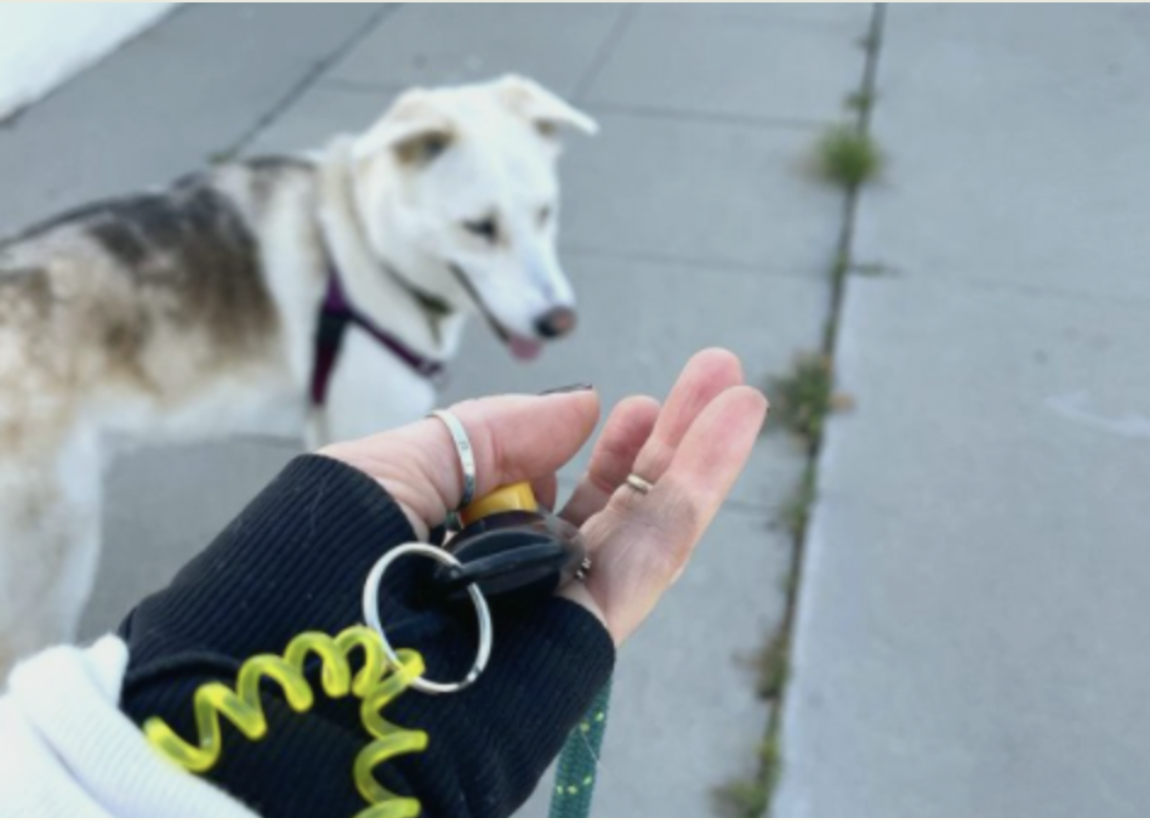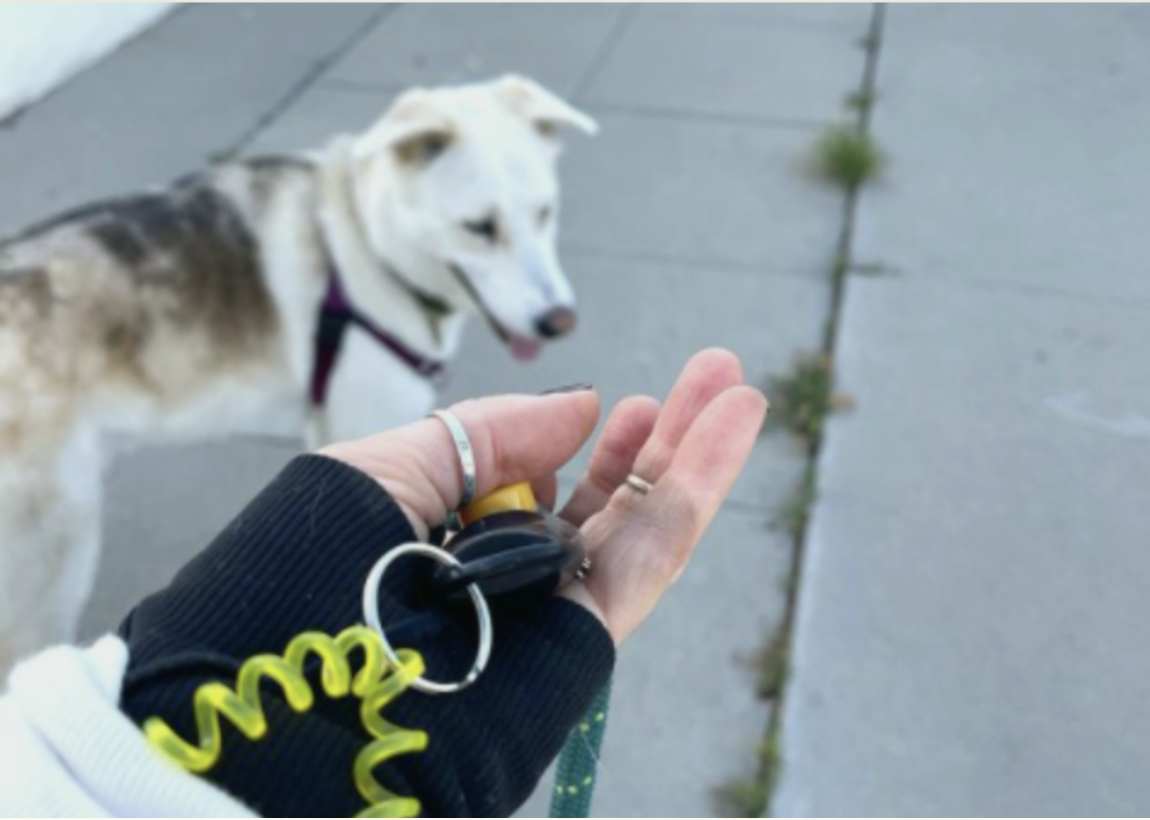Clicker Training 101

If you are new to the dog training experience, the use of clickers can seem bizarre. Most people find them daunting until they see the benefits. As a force-free and science-based dog training service, we use clickers daily with our dogs and during training. Regardless of the specific training goals that you have with your pet, clicker training is a terrific, science-based way to communicate with your pet.
Keep scrolling for a quick but informative look into what clickers are, how we use them during training, their benefits, as well as a few tips on how to get started!
What is Clicker Training?
Clicker training is a form of positive reinforcement dog training that utilizes a “clicker” or a small device that clicks.
Through science, we have learned that there are a few different ways that dogs can learn (we will go into each of these in a later post). In particular, your dog learns by repeating a behavior that is affirmed through reinforcement. Positive reinforcement training focuses on rewarding your dog for desired behaviors (i.e., sit, stay, recall, etc.) instead of correcting the behaviors you dislike (i.e., pulling on a leash). If you give your dog a treat every time they look at you, your dog is more likely to repeat this behavior in the future.
Although a clicker is not required for positive reinforcement training, it makes training more efficient as the clicker becomes the conditioned reinforcer and helps communicate more clearly with your dog. Utilizing a clicker tells your dog exactly what behavior you are reinforcing!
How we use Clickers
The clicker is a marker of the moment the dog does something we want; we click, the dog hears the sound that leads to reinforcement and starts associating the behavior with that exact moment, repeating multiple times so that the dog fully comprehends.
We have the clicker in our non-dominant hand, the treat bag on the dominant side, and our pet with us with little to no distractions. We choose the behavior that we want to work on. We set criteria of what we want this to look like, and then we start with 5 min training sessions.
We may use a lure to get our dog in the behavior to start or capture the behavior. The second our pet offers this behavior, we click and treat 1-2 seconds later. Repeat. I like short training sessions to ensure I’m not pushing animals too hard and leaving them wanting more!
Benefits of Clicker Training
The benefits of clicker training are endless, as it helps strengthen the bond between dog/guardian, increases communication, and builds your dog’s confidence. Even further, clicker training is efficient and much easier to comprehend than command-based training. Instead of guessing what behavior you liked, the click tells your dog precisely what the desired behavior is (i.e., if you are teaching your dog to “touch,” you click the second their nose touches your hand).
As we mentioned, clicker training helps build your dog’s confidence, as there is no punishment or harsh words. Through positive reinforcement training, your dog can learn without the fear of making a mistake or having negative repercussions! As a result, dogs love clicker training and look forward to learning. What is not to love?
*Fun Fact: All animals can be clicker trained, not just dogs. We train chickens, horses, pigs, cats, birds, guinea pigs, bunnies, rats, and goats!
Clicker Tips
Here are a few tips to keep in mind:
-
Timing is crucial! We try to click when the desired behavior happens and treat right after! Make sure you aren’t clicking too late.
-
Don’t mix scoldings, leash-jerking, and correction training with clicker training. If you are not progressing with a particular behavior, end the session and start with easier criteria.
Although clicker training is fun for you and your pet, it can also be challenging at first. At Underdogs Long Beach, we are happy to help with in-person training sessions and remote sessions. Reach out to us with any questions, or check out our services page to see how we can help elevate your training experience.
